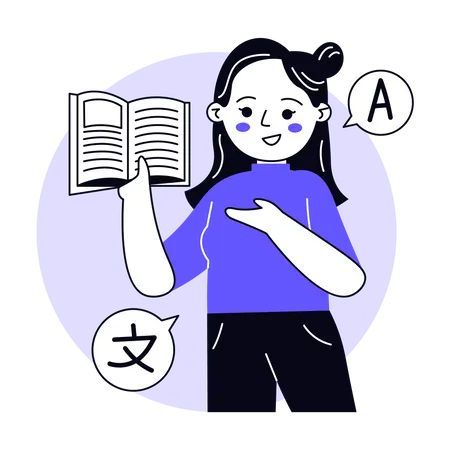Before you learn and search about Baddiehub, you must learn about Baddiehub culture.
In recent years, the term “Baddiehub” has emerged as a buzzword in online communities, often denoting a particular aesthetic and cultural trend. This article delves into the multifaceted world of “Baddiehub” culture, examining its origins, appeal, controversies, and broader implications.
Understanding the Term “Baddiehub”
Definition and Origins
The term “Baddiehub” originated within online communities, particularly on social media platforms like Instagram and TikTok. It refers to a subculture characterized by individuals who exude confidence, glamour, and empowerment. The term “baddie” itself is slang, typically used to describe someone who is stylish, attractive, and self-assured.
Evolution of the Concept
Over time, the concept of “Baddiehub” has evolved, encompassing various elements of fashion, beauty, lifestyle, and attitude. While its roots can be traced back to hip-hop culture and urban fashion, “Baddiehub” has transcended specific genres to become a broader phenomenon embraced by diverse communities worldwide.
The Appeal of Baddie Culture
Confidence and Empowerment
At the core of “Baddiehub” culture is the celebration of confidence and self-assurance. Baddies are often depicted as individuals who are unapologetically themselves, embracing their flaws and imperfections with grace. This emphasis on self-love and empowerment resonates with many individuals seeking to break free from societal norms and expectations.
Glamour and Style
Another key aspect of “Baddiehub” culture is its emphasis on glamour and style. Baddies are known for their impeccable fashion sense, bold makeup looks, and glamorous lifestyles. They often serve as trendsetters, inspiring others to experiment with their personal style and express themselves creatively.
The Dark Side of “Baddiehub”
Potential Negative Associations
Despite its positive connotations, the term “baddiehub” can also carry negative associations, particularly when it intersects with explicit content or harmful stereotypes. In some contexts, the term may be used to objectify individuals or perpetuate unrealistic beauty standards, leading to feelings of inadequacy and insecurity among impressionable audiences.
Misrepresentation and Objectification
There is a fine line between celebrating confidence and objectifying individuals based on their appearance. In certain online spaces, the notion of being a “baddie” may be reduced to superficial traits, overlooking the complexity and depth of individual personalities. This can perpetuate harmful stereotypes and contribute to the commodification of beauty.
Navigating the Baddie Culture Online
Social Media Influence
Social media platforms play a significant role in shaping and perpetuating “Baddiehub” culture. Influencers and content creators often curate carefully crafted personas, showcasing their glamorous lifestyles and impeccable aesthetics, to attract followers and engagement. However, behind the scenes, the reality may be vastly different, leading to feelings of disillusionment among audiences.
Impact on Body Image and Self-Perception
The proliferation of idealised images and curated lifestyles on social media can have detrimental effects on individuals’ body image and self-perception. Constant exposure to unrealistic beauty standards may lead to comparison and feelings of inadequacy, especially among young, impressionable audiences. It’s essential to promote body positivity and self-acceptance amidst the glamour of “Baddiehub” culture.
Ethical Considerations in Baddie Culture
Empowerment vs. Exploitation
As “Baddiehub” culture continues to gain traction, it’s crucial to address ethical concerns surrounding empowerment versus exploitation. While embracing one’s confidence and individuality is empowering, it’s essential to ensure that such empowerment is not achieved at the expense of others or through the perpetuation of harmful stereotypes.
Responsibility of Content Creators
Content creators within the “Baddiehub” community have a responsibility to foster inclusivity, diversity, and authenticity in their content. By showcasing a range of perspectives and experiences, they can challenge existing norms and promote a more inclusive definition of beauty and empowerment.
Diversity and Inclusivity in Baddie Culture
Breaking Stereotypes
One of the strengths of the “Baddiehub” culture lies in its ability to break stereotypes and challenge conventional beauty standards. By celebrating diversity in all its forms, from race and ethnicity to body type and gender expression, the “Baddiehub” community fosters a more inclusive and accepting environment for individuals of all backgrounds.
Embracing Different Identities
In recent years, there has been a growing emphasis on embracing different identities within the “Baddiehub” community. From LGBTQ+ representation to disability advocacy, there is a concerted effort to amplify voices that have historically been marginalized or underrepresented in mainstream media. This commitment to inclusivity enriches the cultural tapestry of “Baddiehub” and promotes greater acceptance and understanding.
Impact on Mainstream Culture
Influence on the Fashion and Beauty Industry
The influence of “Baddiehub” culture extends beyond online communities and into the mainstream fashion and beauty industry. Brands are increasingly recognising the purchasing power and influence of baddies, leading to collaborations and partnerships that celebrate the unique aesthetic and attitude associated with the subculture.
Shifting Beauty Standards
As “Baddiehub” culture continues to challenge traditional beauty standards, there is a noticeable shift towards more inclusive and diverse representations in media and advertising. This broader definition of beauty acknowledges the richness and complexity of human diversity, paving the way for a more equitable and representative society.
Conclusion
In conclusion, “Baddiehub” culture encapsulates a dynamic blend of confidence, glamour, and empowerment, attracting a diverse array of individuals seeking self-expression and community. However, it’s essential to approach such cultural phenomena with caution and sensitivity, acknowledging both its positive aspects and potential pitfalls. By promoting inclusivity, authenticity, and ethical responsibility, we can ensure that “Baddiehub” culture remains a force for positive change in the digital landscape.
FAQs
- What defines someone as a “baddie” in “Baddiehub” culture?
While the term “baddie” can have different interpretations, it generally refers to someone who exudes confidence, style, and empowerment. Baddies are often celebrated for their glamorous aesthetics and unapologetic attitude.
- Is “Baddiehub” culture exclusive to certain demographics?
No, “Baddiehub” culture is inclusive and embraces individuals from diverse backgrounds, regardless of race, ethnicity, gender, or sexual orientation. It’s about celebrating uniqueness and self-expression.
- How can one navigate the potential negative aspects of “Baddiehub” culture?
It’s essential to consume media critically and be mindful of the messages perpetuated by “Baddiehub” culture. Focus on self-love, authenticity, and promoting positive representations of beauty and empowerment.
- Are there any notable figures or influencers associated with the “Baddiehub” culture?
Yes, numerous influencers and content creators within the “Baddiehub” community have amassed large followings on social media platforms like Instagram and TikTok. However, it’s essential to recognise that influence comes with responsibility.
- How can brands engage with “Baddiehub” culture in an ethical manner?
Brands should prioritise authenticity and inclusivity in their marketing efforts, collaborating with influencers and creators who align with their values. It’s essential to avoid tokenism and ensure that diverse voices are genuinely represented.


